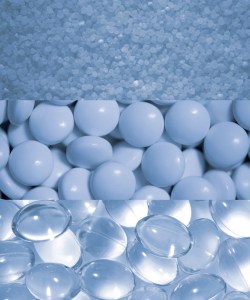Further articles on topic Hot Melt Coating:
Why Hot Melt Coating? | Part 1/3
Disadvantages of solvent-based coatings and why alternatives are needed
The coating of active substances requires the suspension of the auxiliary substances in a solvent. This mixture is then applied to the active ingredient particles. If water is involved, drying is required. This process is time-consuming and costly, as heat energy is required. Other solvents that are considered are alcohols, ethers and ketones. Because they are highly volatile, they dry quickly. On the other hand, it is technically complex, as they have to be removed from the active ingredients.
Active ingredient coating by means of Hot Melt Coating
In the pharmaceutical and food supplement industry, the problem often arises that with solid oral dosage forms, the active ingredient remains in the mouth longer and the taste is perceived more intensively than desired. This can usually be unpleasant for the user and in some cases it can also cause a gag reflex.
A further challenge is the targeted release of the active ingredient, as well as ensuring the protection and stability of the solid oral dosage form and, if necessary, increasing the active ingredient content. To meet these requirements, complex and time-consuming coating processes are used. The innovative hot melt coating process, on the other hand, is designed to simplify the encapsulation of active ingredient particles. It is said to be cost- and time-saving, facilitate handling, replace solvent-based processes, ensure increased stability and enhance user-friendliness.
Online Contact Form:
Choose your country for the correct online contact form.
Are you interested in Hot Melt Coating?
Click here for more information about BonuWax®,contact us or just order a free sample.
Hot Melt Coating – Instructions:
Watch our YouTube video about the application of our hot melt coating product BonuWax®.


